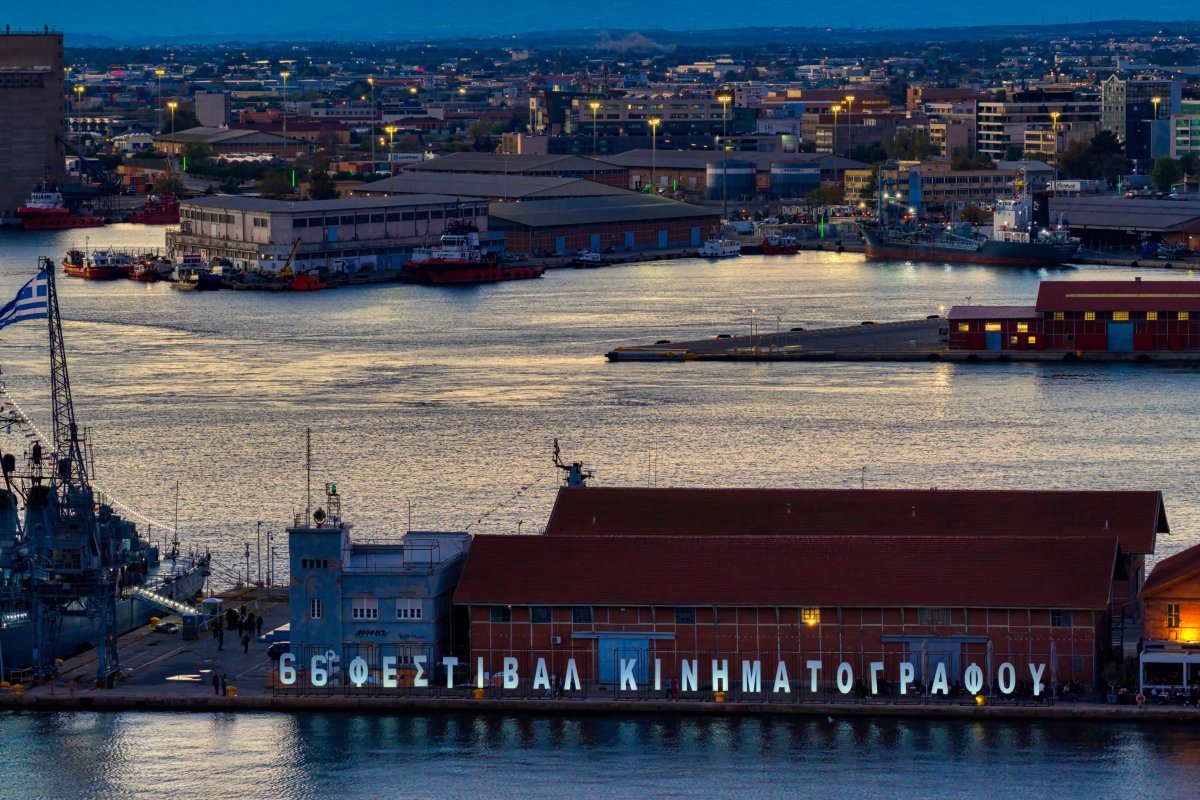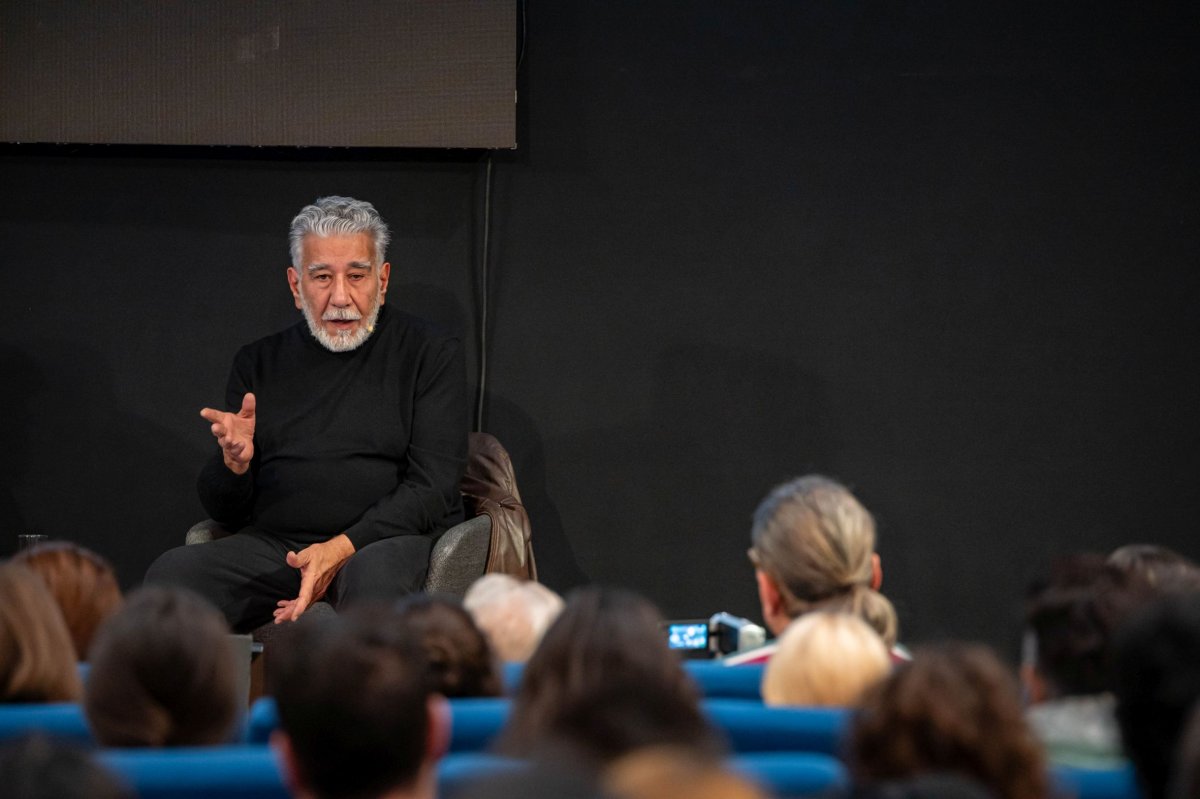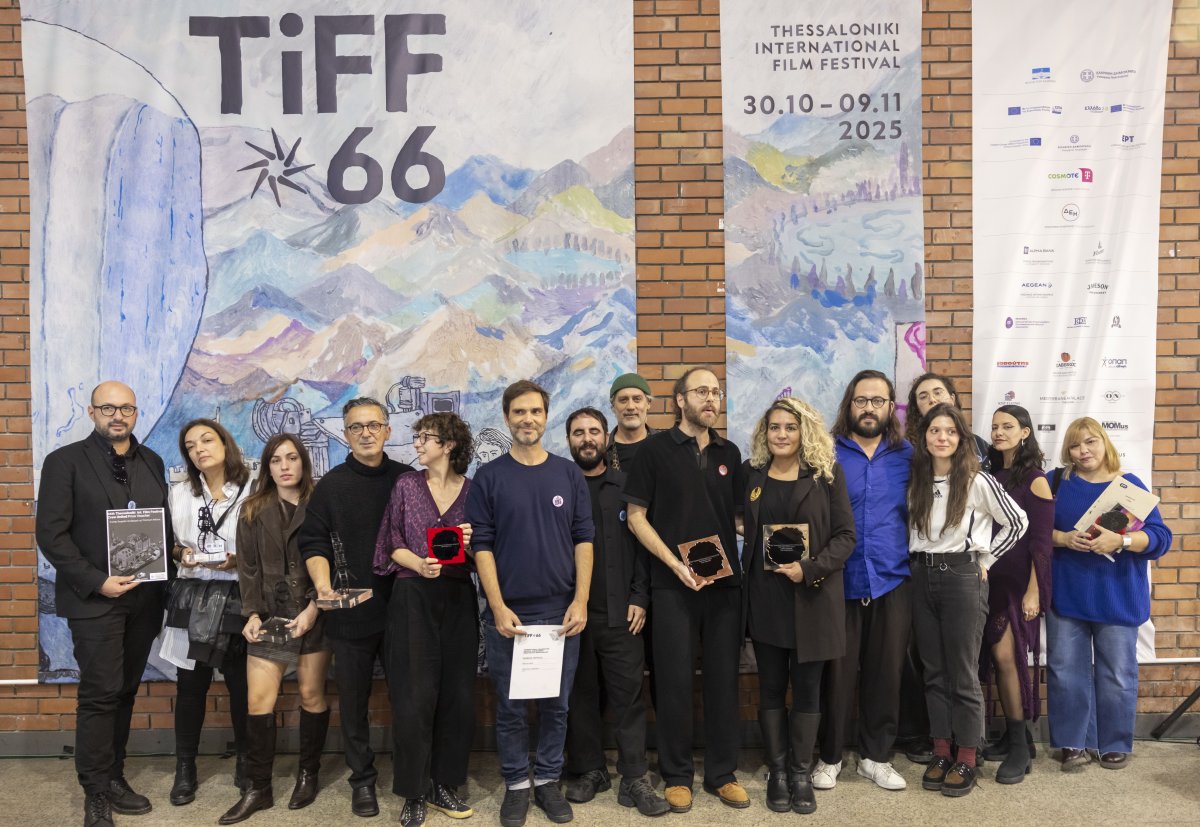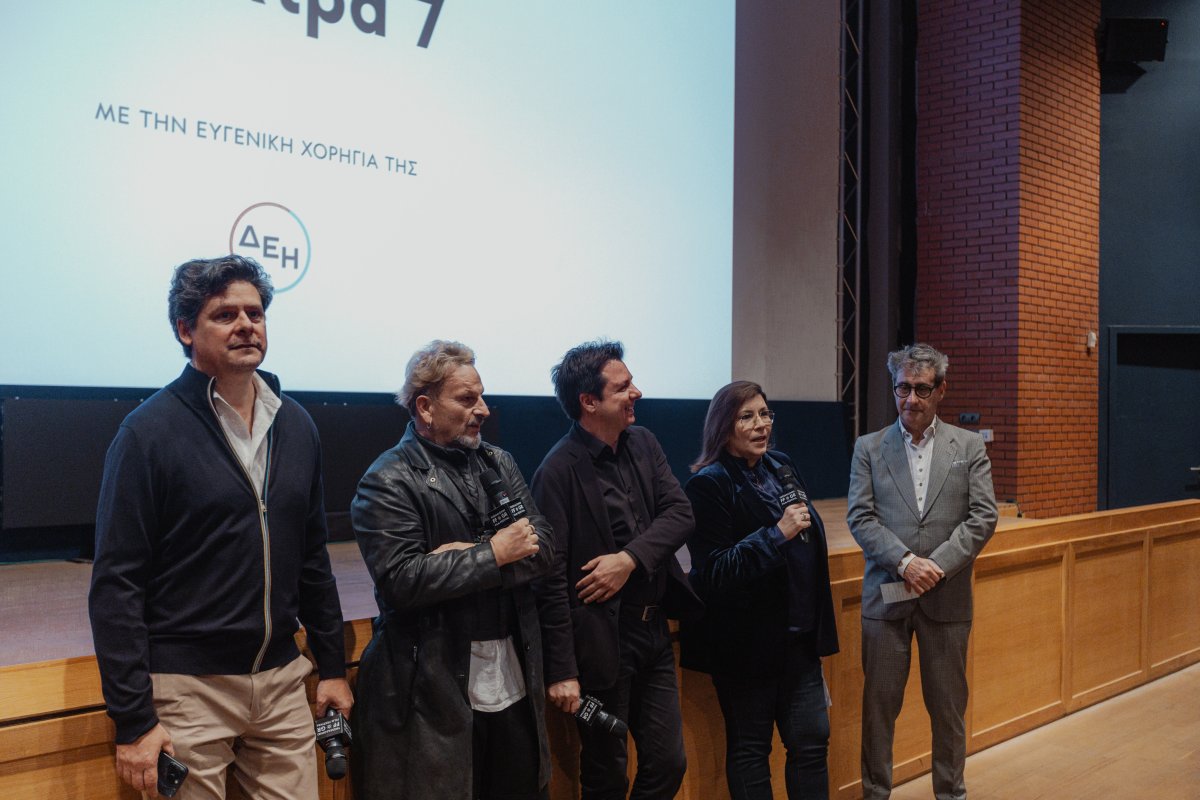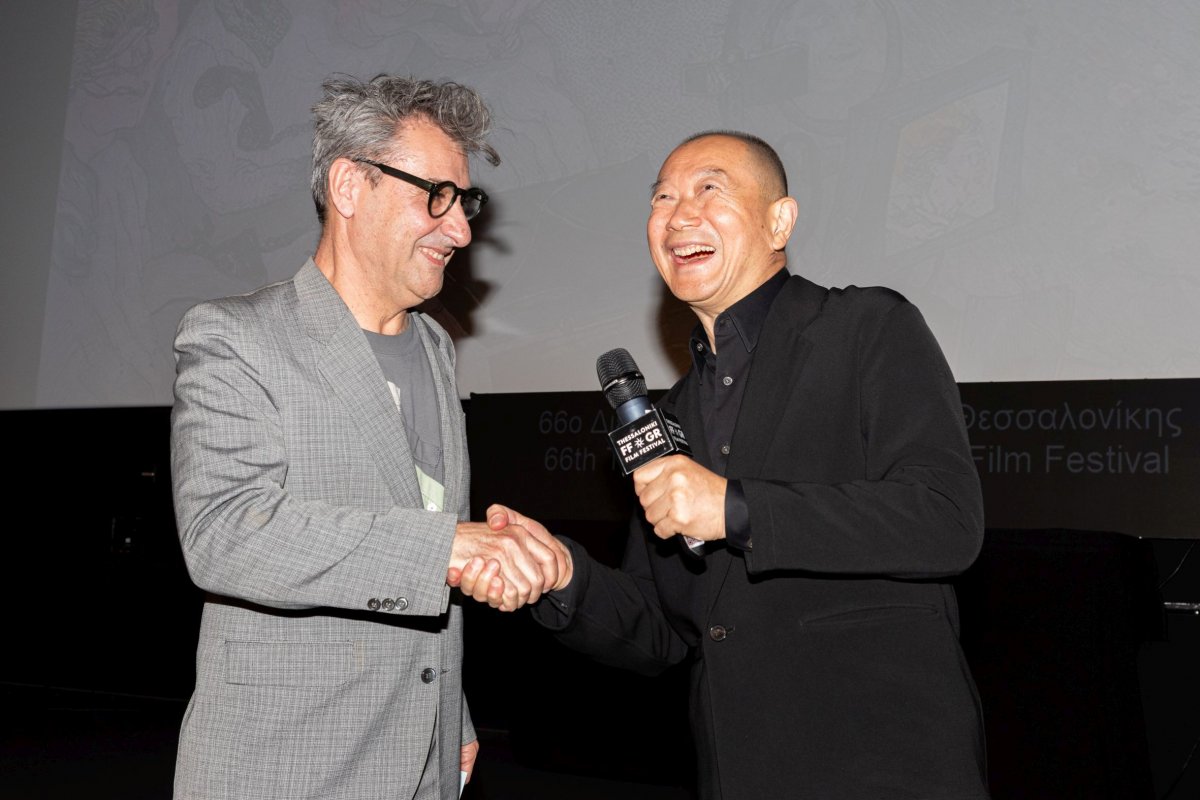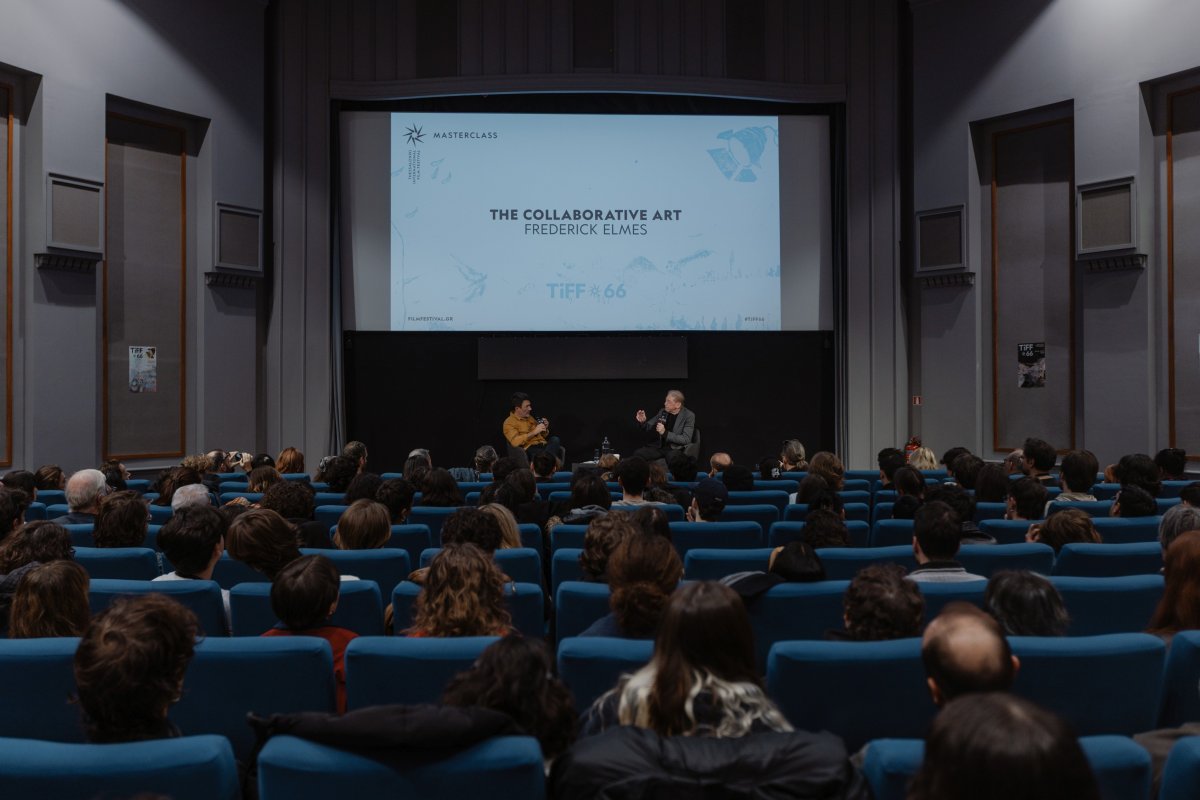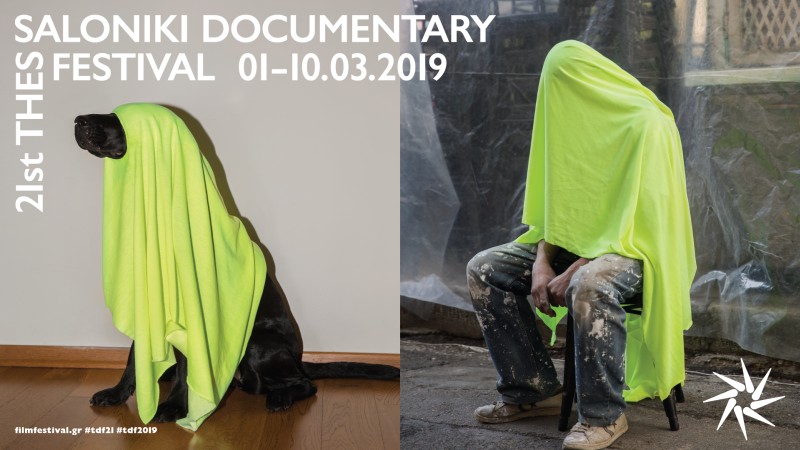PRESS CONFERENCE
WINDS OF SAND, WOMEN OF ROCK –
THE FIVE CARDINAL POINTS
The first press conference for foreign directors of the 12th Thessaloniki Documentary Festival - Images of the 21st Century took place at noon on Sunday, March 14, 2010, with the participation of Nathalie Borgers (Winds of Sand, Women of Rock) and Fridolin Schonwiese (The Five Cardinal Points).
The idea for the documentary Winds of Sand, Women of Rock arose when the director learned about the women of the Tubu tribe, who while being shut up in their homes, once a year cross 1,500 kilometers through the desert to collect dates. Selling their harvest brings them economic independence, pride and self-confidence. Their stories revealed to the director the majesty of the strength of the resistance of these women against a stiflingly male dominated environment and became the subject of her documentary. “Strength and perseverance are a common characteristic of all women. But in Africa, the natural environment and the social dictates are very different in relation to the rest of the world, and that’s why the image of the strength of these women is more powerful”, Nathalie Borgers noted. The documentary focuses on three women, and the confrontation between tradition and modernism, personal freedom and social solidarity gives the tone of the film. “What interested me was their own personal viewpoint, as well as the issue of strength that they themselves show”, noted the director. She also described the particularly difficult conditions under which the documentary was made: “The sand was always present, the wind a little less so, but it is really difficult to describe the heat. None of the participants in the film knew what the temperature was during shooting, because after 68ο C the thermometer broke! To stay true to the esthetic and the quality of the image, we worked with a super 16 camera and in order to prevent the film from being ruined we had to keep it at 10ο C. So we were carrying five portable refrigerators which worked on batteries 24 hours a day. We recharged the batteries with other batteries, and those in their turn from the car. Almost all our equipment broke down except for the camera, and we were left with very few means to go on with”.
Fridolin Schonwiese’s documentary The Five Cardinal Points takes place between Mexico’s Tres Valles and its “twin” town of Tres Vallitos in Kansas, USA, where illegal Mexican immigrants live. It took five years and 23 trips between Mexico and the USA to make the film. “At first the locals called me a gringo, but in time they started to trust me”, the director said. He also said that in the beginning he started transporting photos of relatives from one side of the border to the other, which eventually became videos with greetings exchanged between various family members who had been separated. “It took two years to approach these people. I lived with them, I became part of their family. At first I went with a hand held camera, since they didn’t know they were being filmed. Gradually however, the camera “grew” and I ended up with 230 hours of material at my disposal”, he noted. In answer to a question about the film’s title “The Five Cardinal Points”, he stated that the film presents images from the North – South axis and goes from east to west, the border of three kilometers that separates Mexico from the USA. He explained: “The Five Cardinal Points is not about geographic coordinates. It’s the Mexican dream, which is not a place. Mexicans immigrate to America not to live the American dream, but to return to their country and live the Mexican dream there. At some point they make enough money and go home. They build houses, which are often left half finished, so they symbolize their dream of returning home. But often they can’t find a job to continue their lives in Mexico. They are forced to enter the USA illegally, and this vicious cycle continues”.




